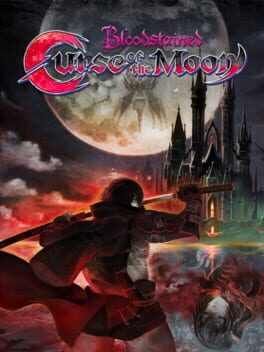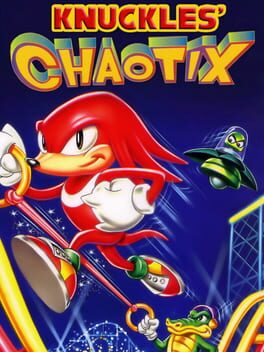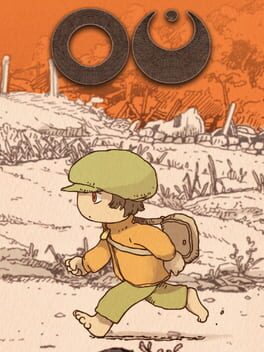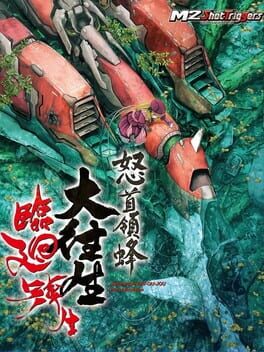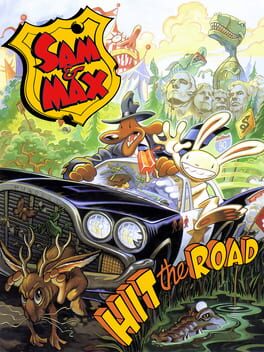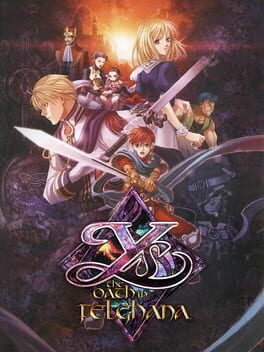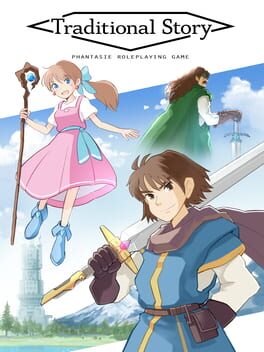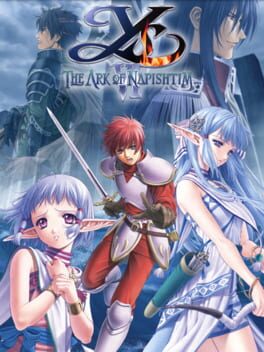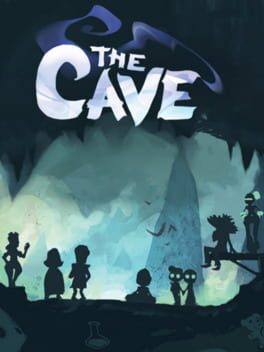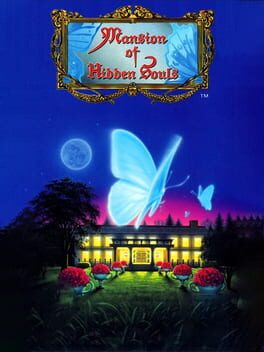oolongstains
Played on casual; the 30+ minutes it took just to get it running counts as veteran mode, to me.
Pretty fun little Castlevania-like. Leans very heavily on its influences but has enough of its own ideas to be interesting. Heavy alternate path use is fun, even if it's not really interested in letting you find them on your own. The extreme differences between the characters is interesting; appreciate that not-Alucard's attack is basically the classic Dracula three fireball thing.
Started but haven't finished the second loop; will probably go back for it.
Pretty fun little Castlevania-like. Leans very heavily on its influences but has enough of its own ideas to be interesting. Heavy alternate path use is fun, even if it's not really interested in letting you find them on your own. The extreme differences between the characters is interesting; appreciate that not-Alucard's attack is basically the classic Dracula three fireball thing.
Started but haven't finished the second loop; will probably go back for it.
1995
What a deeply weird game. I get what they're going for and I can also tell the team was struggling to make it all work. I feel like the heavy momentum-based swinging mechanics could be made to work even if this game isn't quite there. The level design feels like they were flailing, and like development cut off before they actually figured out how to build levels that play well with this movement.
Killer aesthetics and secretly one of the best Sonic soundtracks.
Killer aesthetics and secretly one of the best Sonic soundtracks.
2023
2023
Genuinely shocked by how good this is. Faithful to the original in the best sense; has a really great vision of what to do with the original prerendered artstyle given newer tools. I appreciate the restraint to keep to the original fixed, isometric camera angle and to faithfully reproduce the wonky look of the orginal models in just the right way. Where it makes changes, they support the original game well; it expands on the backgrounds in places where they're no longer subject to the same technical restrictions as the original, but which still fits very much with the original feel. Likewise, the few changes to the gameplay feel like they complement the original design without turning it into something dramatically different from what it used to be. Good stuff.
2022
2023
Smartly-designed and smartly-written. Timeloop games feel like they've become a bit of a trope recently, but what surprised me here was how much it has to say with it and how well-executed it is.
Getting a 35-hour RPG out of a single dungeon the player has to repeatedly loop through has so much room for things to go wrong, for it to become tedious for all the wrong reasons, and I'm shocked it works this well. The writing is sharp, interesting enough I convinced myself I'd keep reading it every time, then eventually I started zoning out and skipping it exactly the same way the main character diegetically is as he's getting increasingly distant from reality for having seen it so many times. Mechanically it doesn't change too much, but enough things open up to make repeated trips through the one dungeon feel different in a way that still keeps it interesting while still giving you the diegetic tedium of repeating the same steps over and over.
If I have any real complaints, it's just that the ending is a bit too neat and tidy. The buildup to the ending is increasingly harrowing and tense, but the climax feels like it's over in a blink. It just doesn't quite feel like it's spent enough time on its consequences or on the experience of its entire cast.
Getting a 35-hour RPG out of a single dungeon the player has to repeatedly loop through has so much room for things to go wrong, for it to become tedious for all the wrong reasons, and I'm shocked it works this well. The writing is sharp, interesting enough I convinced myself I'd keep reading it every time, then eventually I started zoning out and skipping it exactly the same way the main character diegetically is as he's getting increasingly distant from reality for having seen it so many times. Mechanically it doesn't change too much, but enough things open up to make repeated trips through the one dungeon feel different in a way that still keeps it interesting while still giving you the diegetic tedium of repeating the same steps over and over.
If I have any real complaints, it's just that the ending is a bit too neat and tidy. The buildup to the ending is increasingly harrowing and tense, but the climax feels like it's over in a blink. It just doesn't quite feel like it's spent enough time on its consequences or on the experience of its entire cast.
2023
A lot of modern metroidvanias I've played, like Deedlit in Wonder Labyrinth, focus on combat over traversal and exploration. Pseudoregalia's movement skills are just so fun and interesting to use, and the whole game's designed around it; I love it. The different movement skills work together so well, letting play become more expressive the further the player gets. The level design is great and supports interesting, inventive ways to get around depending on what the player happens to have access to.
I picked up the wall kick first, which is maybe the riskiest and hardest to use of any of them, but I took to it right away and ended up getting to areas my friend didn't think were even possible to reach with just that one ability.
As much as I loved the rest of the game, I did find one particular platforming section in the late game pretty fiddly and uninteresting, and the final boss was merely okay rather than an interesting climax.
I picked up the wall kick first, which is maybe the riskiest and hardest to use of any of them, but I took to it right away and ended up getting to areas my friend didn't think were even possible to reach with just that one ability.
As much as I loved the rest of the game, I did find one particular platforming section in the late game pretty fiddly and uninteresting, and the final boss was merely okay rather than an interesting climax.
If you know the original game, or if you know M2, you don't really need to ask "is the game good" or "is the port good" - you know the game's good, and you know the port will be great.
Dai-Ou-Jou is one of those games shmup people talk about a lot, but for good reason - it's a genuine classic, and it's still just as good today. The core, elemental mechanics - a laser that slices through enemies and slows you down for precision dodging, a shot that lets you move fast while taking out small enemies - are common to a lot of shmups, but they're executed flawlessly here. Its signature mechanic, the hyper attack, is still just as satisfying. Playing well enough to earn the hyper lets you turn the tables to do incredible damage to enemies, taking out waves or bosses that feel impossible otherwise; the feeling of power after being under pressure feels great.
The new arrange pilots are great, and a lot of fun. I wasn't sure what to expect, but they change up the core gameplay in very interesting ways. They're also all easier than the core game, but they use the original game's enemy placement and bullet patterns; learning the arrange pilots is still learning the "real" arcade game. It's a fantastic bridge for intermediate players who want something more substantial than super easy mode, not to mention something I enjoy playing when I want to actually see more than 1-2 levels in a run. I'm not good enough to master the original arcade game yet, much as I'm working on it!
All three of the arrange pilots play with the original game's push and pull of safety in new ways. Arrange-L and Arrange-EX let you erase bullets from heavy enemies by training your laser on them long enough - build up a focus meter by keeping your laser on them, and every bullet of theirs that's still onscreen turns into point pickups. Not only does it make the game easier, it opens up some interesting new strategies. It starts to get tempting to let heavy enemies live a bit longer so they leave more bullets onscreen, giving you more points when you take them out. The brief moment of safety when those bullets turn into harmless score pickups is a breath of relief that this game doesn't offer much of, but it's the kind of push and pull of "accept risk to get a little extra reward" that I appreciate about my favourite Cave games, just like SDOJ Exa Label and Akai Katana Shin. Arrange-L and EX also have auto-bomb/hyper on by default, saving the skin of players who missed bombing at the right time to avoid death, which also helps extend runs a bit longer, and players are given extra lives for beating bosses so runs go longer.
If I have a single complaint, it's that most of the content is focused on the original "white label" arcade release. I do think the balance in Black Label is better, so I'm surprised it's treated like a bonus feature. That side, Black Label and the English Dodonpachi III have all the same extra features and presentation as white label, so it's not a huge deal, just an oddity.
One of these days, I'll finally manage a 1CC of the main game, and I'll treasure every blissful death on the way. But in the meantime, I'm also working towards 1CCs of Arrange-L and Arrange-EX and loving every minute of it.
Dai-Ou-Jou is one of those games shmup people talk about a lot, but for good reason - it's a genuine classic, and it's still just as good today. The core, elemental mechanics - a laser that slices through enemies and slows you down for precision dodging, a shot that lets you move fast while taking out small enemies - are common to a lot of shmups, but they're executed flawlessly here. Its signature mechanic, the hyper attack, is still just as satisfying. Playing well enough to earn the hyper lets you turn the tables to do incredible damage to enemies, taking out waves or bosses that feel impossible otherwise; the feeling of power after being under pressure feels great.
The new arrange pilots are great, and a lot of fun. I wasn't sure what to expect, but they change up the core gameplay in very interesting ways. They're also all easier than the core game, but they use the original game's enemy placement and bullet patterns; learning the arrange pilots is still learning the "real" arcade game. It's a fantastic bridge for intermediate players who want something more substantial than super easy mode, not to mention something I enjoy playing when I want to actually see more than 1-2 levels in a run. I'm not good enough to master the original arcade game yet, much as I'm working on it!
All three of the arrange pilots play with the original game's push and pull of safety in new ways. Arrange-L and Arrange-EX let you erase bullets from heavy enemies by training your laser on them long enough - build up a focus meter by keeping your laser on them, and every bullet of theirs that's still onscreen turns into point pickups. Not only does it make the game easier, it opens up some interesting new strategies. It starts to get tempting to let heavy enemies live a bit longer so they leave more bullets onscreen, giving you more points when you take them out. The brief moment of safety when those bullets turn into harmless score pickups is a breath of relief that this game doesn't offer much of, but it's the kind of push and pull of "accept risk to get a little extra reward" that I appreciate about my favourite Cave games, just like SDOJ Exa Label and Akai Katana Shin. Arrange-L and EX also have auto-bomb/hyper on by default, saving the skin of players who missed bombing at the right time to avoid death, which also helps extend runs a bit longer, and players are given extra lives for beating bosses so runs go longer.
If I have a single complaint, it's that most of the content is focused on the original "white label" arcade release. I do think the balance in Black Label is better, so I'm surprised it's treated like a bonus feature. That side, Black Label and the English Dodonpachi III have all the same extra features and presentation as white label, so it's not a huge deal, just an oddity.
One of these days, I'll finally manage a 1CC of the main game, and I'll treasure every blissful death on the way. But in the meantime, I'm also working towards 1CCs of Arrange-L and Arrange-EX and loving every minute of it.
Turns out Sam & Max is pretty great! Sam & Max? You ever hear about that one? I'm only 30 years late.
The jokes are still great; there's a lot of good specific gags, but I think it's the overall vibe and the Sam/Max relationship that carries it the most.
Seems like this was one of the first games where Lucasarts abandoned their original UI for something a lot more like Sierra's. For how much their approaches got contrasted to each other, it's kind of funny seeing them directly adopt Sierra's method of interacting with the game world.
The jokes are still great; there's a lot of good specific gags, but I think it's the overall vibe and the Sam/Max relationship that carries it the most.
Seems like this was one of the first games where Lucasarts abandoned their original UI for something a lot more like Sierra's. For how much their approaches got contrasted to each other, it's kind of funny seeing them directly adopt Sierra's method of interacting with the game world.
I was wondering where they'd take this after Ys VI. I appreciate that it's building on Ys VI's combat but with just that much extra care put into the design. The decision to remove consumables from the player inventory and eliminate "banking" healing items works surprisingly well; it makes the bosses into even more of pure action setpieces than they were in the first game. The level design and combat design are both a step up from an already great game, in particular the detail put into making hitboxes and vulnerability features feel fairer.
I'd played and abandoned Ys III a few times before this. I'm genuinely impressed how much they manage to nod at the original game in a recognizable way, right down to some of the level layouts, despite the switch to a top-down map perspective and some very different combat.
I'd played and abandoned Ys III a few times before this. I'm genuinely impressed how much they manage to nod at the original game in a recognizable way, right down to some of the level layouts, despite the switch to a top-down map perspective and some very different combat.
2023
Gentle, beautiful, poetic. This is a game to take slow and savour; it's not the kind of game to rush. I like enjoying this kind of scenery, I like imagining these sorts of spaces.
The use of "apply sticky notes to things you want to remember" as core game mechanic is inspired, especially in this kind of storybook thing.
The use of "apply sticky notes to things you want to remember" as core game mechanic is inspired, especially in this kind of storybook thing.
2022
I was playing this for Japanese practice, and when I hit the point where I realized I was grinding endlessly and not actually reading any new text, it wasn't doing the job I was playing it for.
This is very much a teenager's first RPG, so it doesn't feel fair to review it as a game in the normal way. I enjoyed it for what it is, but the simple combat and need for extensive grinding meant I was spending less time exploring the world and talking to characters. Feels a little telling the dev's own recorded playthrough as an adult had him playing it on 4x speed.
This is very much a teenager's first RPG, so it doesn't feel fair to review it as a game in the normal way. I enjoyed it for what it is, but the simple combat and need for extensive grinding meant I was spending less time exploring the world and talking to characters. Feels a little telling the dev's own recorded playthrough as an adult had him playing it on 4x speed.
RPGS RULE FOREVER
Man what a great game. Combat is so satisfying, and the level curve is incredibly fun. I'm not used to a game making single level gains this dramatic relative to a specific area's enemies; it sells the power fantasy of growing strong, and makes the frustration of dealing with enemies just a little too strong for you that much more manageable.
Man what a great game. Combat is so satisfying, and the level curve is incredibly fun. I'm not used to a game making single level gains this dramatic relative to a specific area's enemies; it sells the power fantasy of growing strong, and makes the frustration of dealing with enemies just a little too strong for you that much more manageable.
2013
Incredible vibes. The puzzles are barely puzzles, just excuses to wander around the mansion, but the space is interesting and well-defined enough that I didn't want to be thinking about puzzles instead of wandering. It occasionally falls apart, especially in the late game, when you do need to think about the puzzles but what you're expected to do is completely out of nowhere. But when it works, it works.
